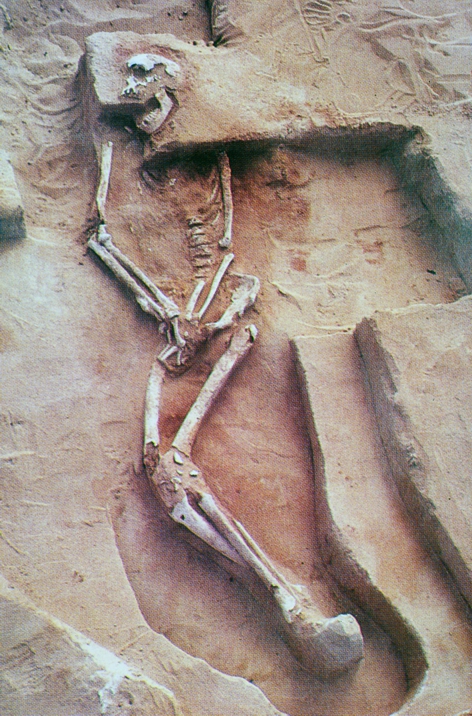Human arrival in Australia marks a watershed in human evolution, because the journey required ocean-going watercraft and multiple island-hops. In terms of technology and planning it clearly demonstrates the high capabilities of the people who first accomplished it. New excavations at Madjedbebe rock shelter in Arnhem Land in northern Australia, reported by Clarkson and colleagues in Nature, have uncovered thousands of artefacts concentrated in three dense bands, with hearths, grinding stones, ochre pigments, shiny minerals, and the oldest known ground-edge hatchet heads. Although there is possibly even more ancient material in lower levels, the oldest well-dated assemblages are placed at more than 61 ka by luminescence methods, and most probably date to around 65 ka. The authors of the study claim ‘This evidence sets a new minimum age for the arrival of humans in Australia, the dispersal of modern humans out of Africa, and the subsequent interactions of modern humans with Neanderthals and Denisovans’.

The generally accepted arrival date in Australia of about 50 ka has been estimated using genetic data from recent populations, and while there have been previous claims for an arrival earlier than 50 ka, these have not gained general acceptance. An arrival date of ~50 ka is also consistent with genetic estimates of ~60 ka for the main exit of anatomically modern humans (AMH) from Africa, allowing about 10 ka for the transit across southern Asia to Australasia.
If valid, these new dates certainly set an older minimum age for the arrival in Australia, together with early evidence of complex technology, and minerals that were probably used for symbolic purposes.
However, there were evidently earlier dispersals of AMH from Africa. We know early AMH were in Israel at >100 ka, and there are claims of AMH teeth from Fuyan Cave, China dated to at least 80 ka. But the fact that mtDNA and Y-chromosome DNA give comparable estimates of arrival into Australia at ~50 ka implied that the earlier waves never reached Australia, died out, or were largely or completely replaced by later waves.

Thus any inference about the timing of the incorporation of Neanderthal and Denisovan DNA into extant Australasians would only be valid if we knew that these earliest inhabitants were direct ancestors of the extant Australasians who have evidence of this ancient hybridization in their genomes - and we don't know that as yet. As already mentioned, there could have been extinctions, or replacements or swampings of these earliest pioneers by later AMH arrivals. And of course, while the assumption that this early colonization was by AMH seems very likely, it does need to be confirmed by supporting fossil evidence.
The apparent survival of archaic humans in Eurasia and S.E. Asia (Neanderthals, Denisovans, Homo floresiensis and perhaps also H. erectus) after this date of ~60 ka may indicate that the effect of these early dispersals was less than the inferred major wave(s) after 60 ka. Perhaps the numbers were smaller, they moved faster and in narrow zones (maybe coastal?), or their ability to replace the other populations was more limited at this earlier date. Thus the potential for interaction and intermixture between dispersing AMH and the archaic species may also have varied across the different waves of dispersal.
 Paleobiology
Paleobiology
Responses